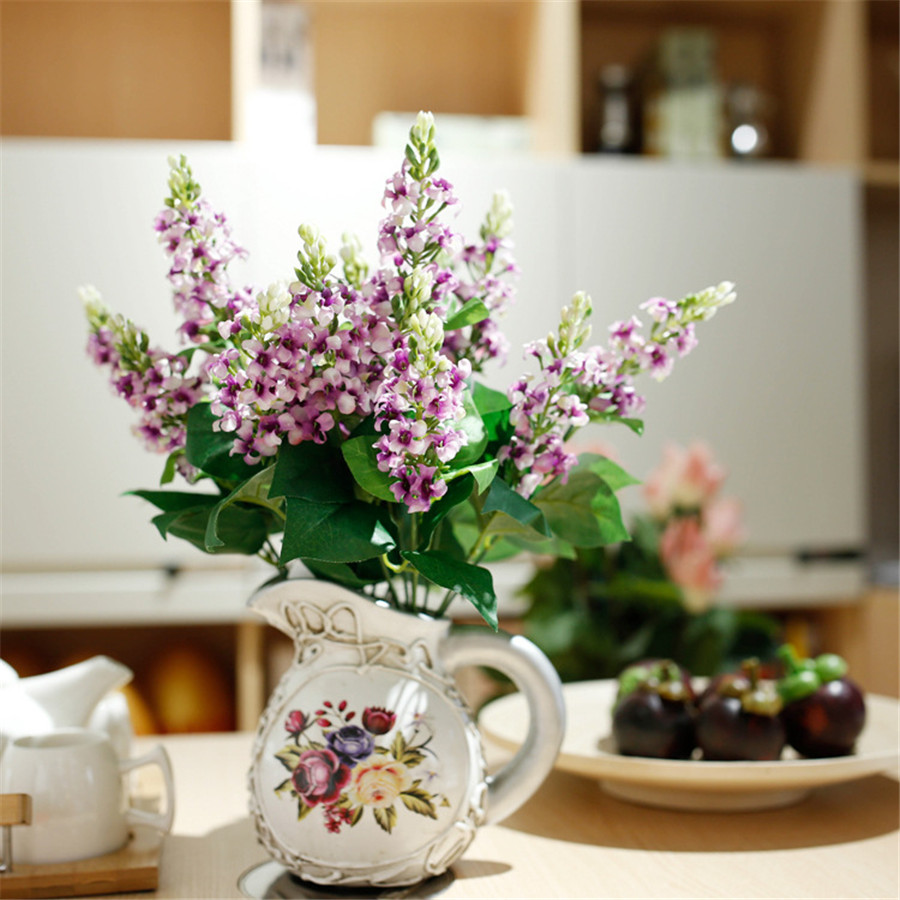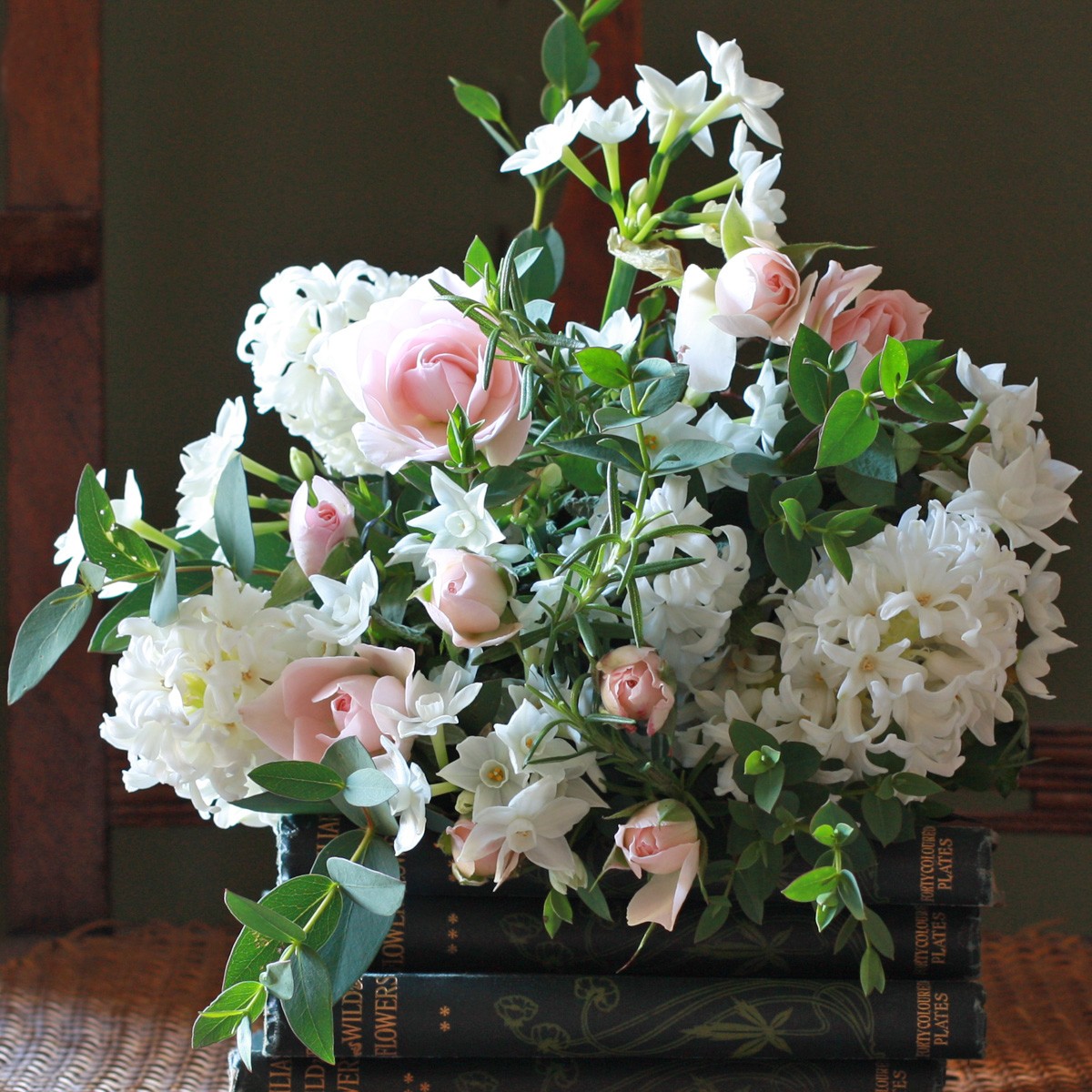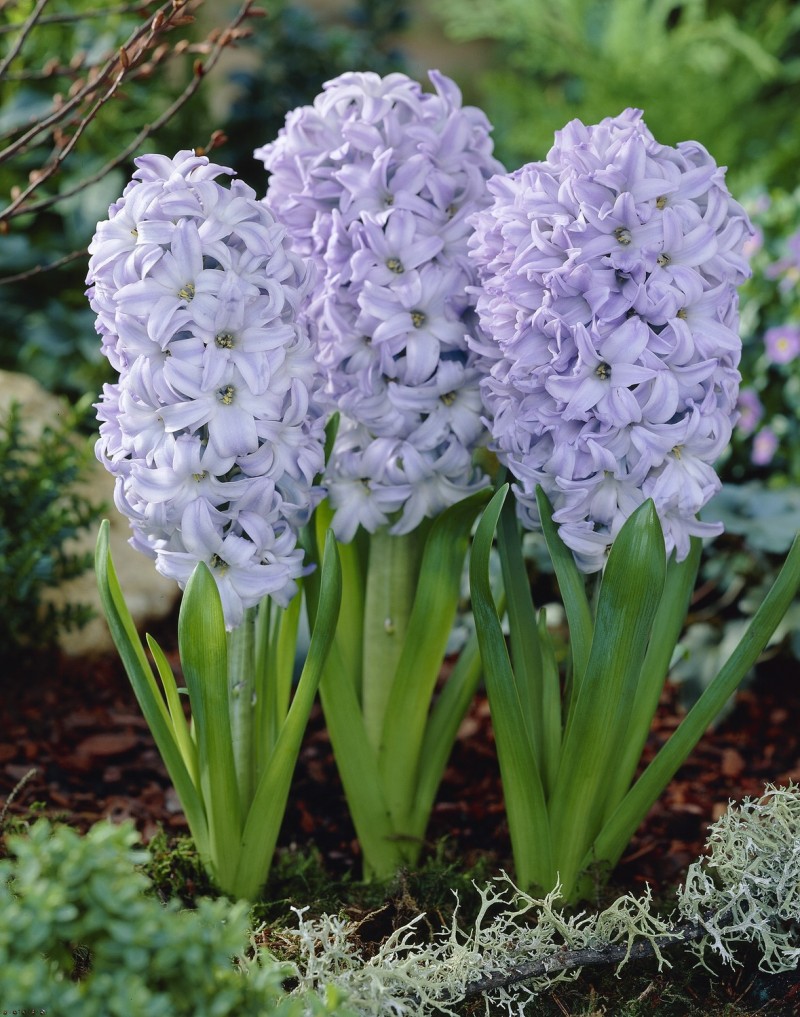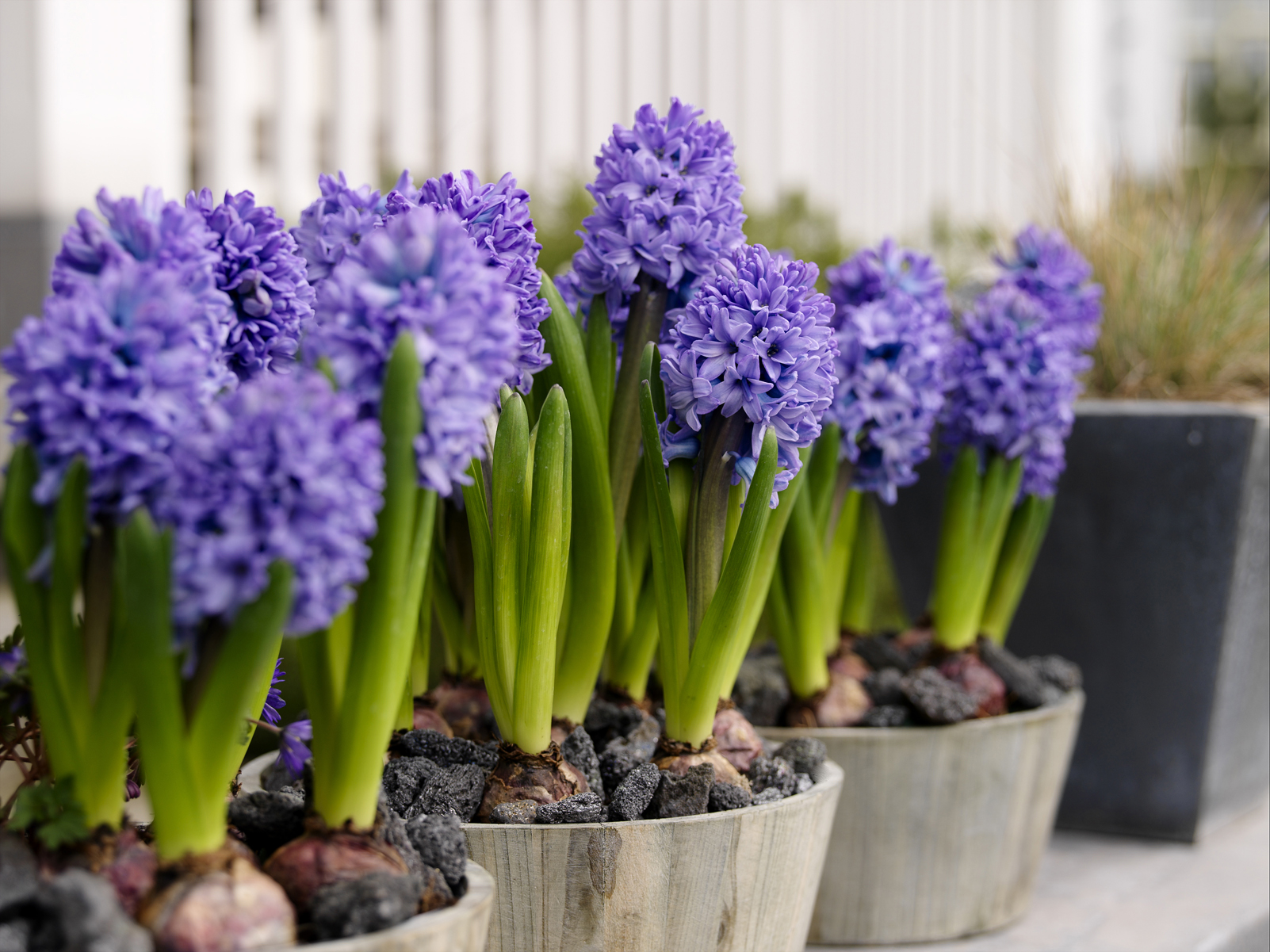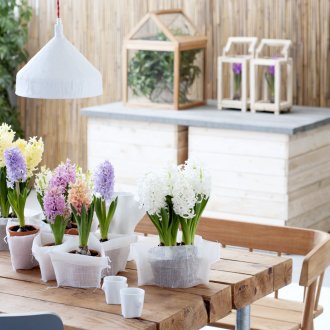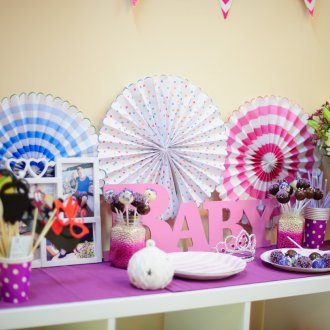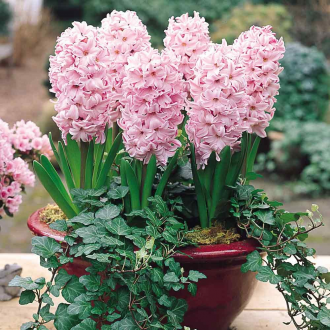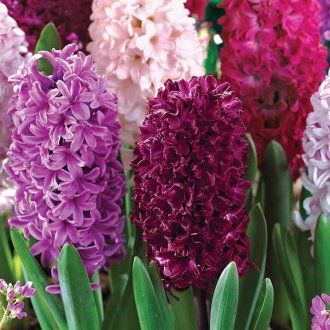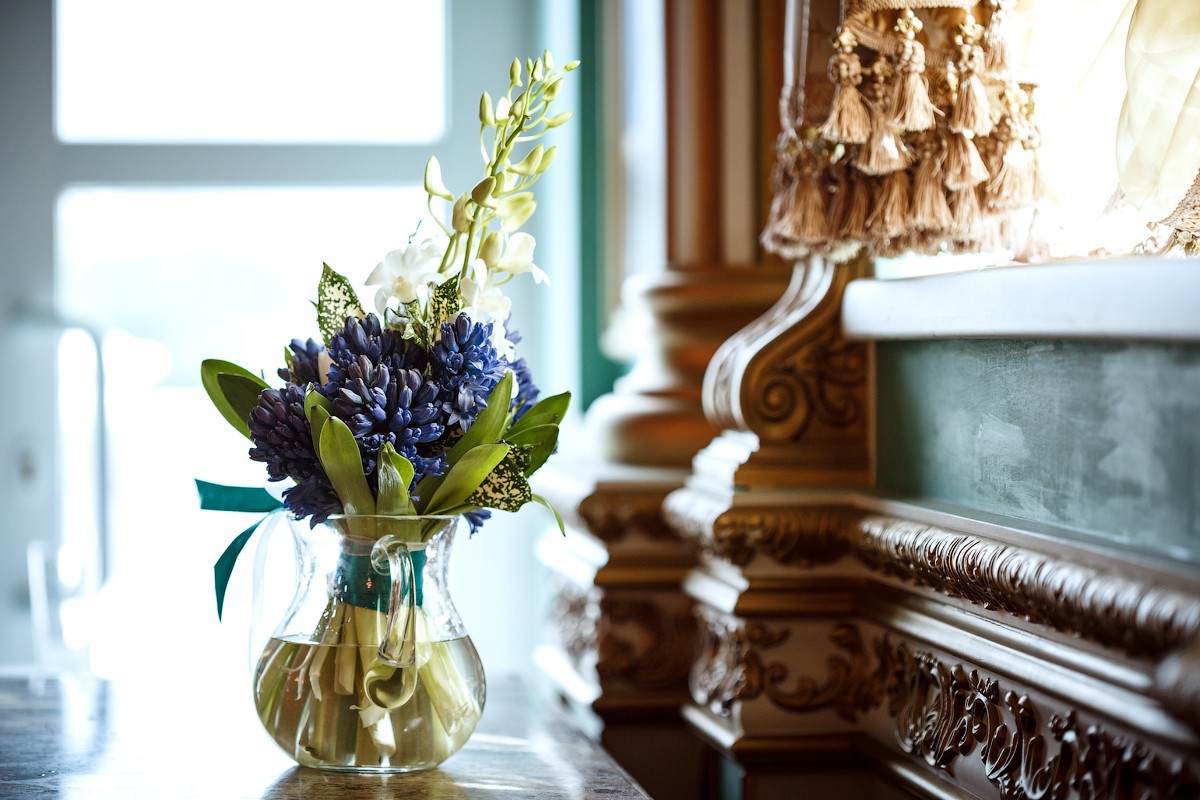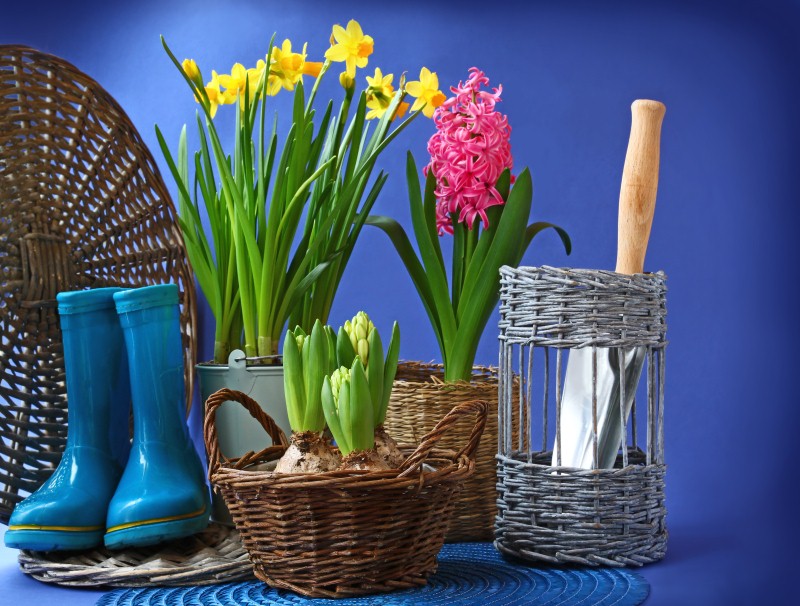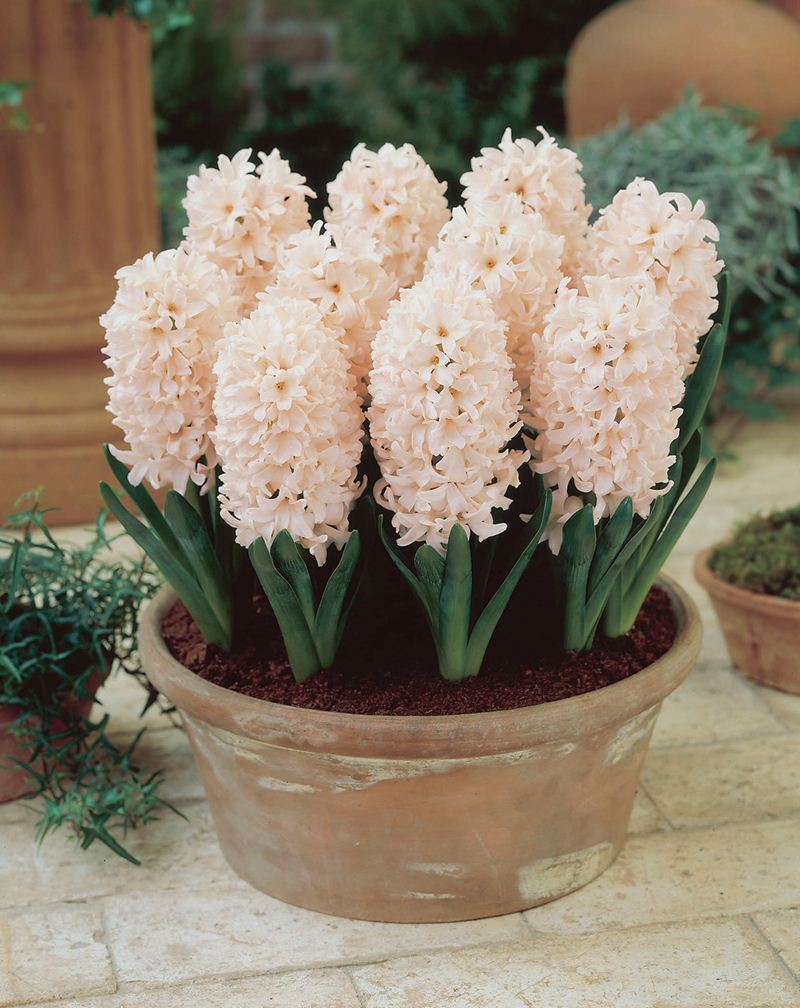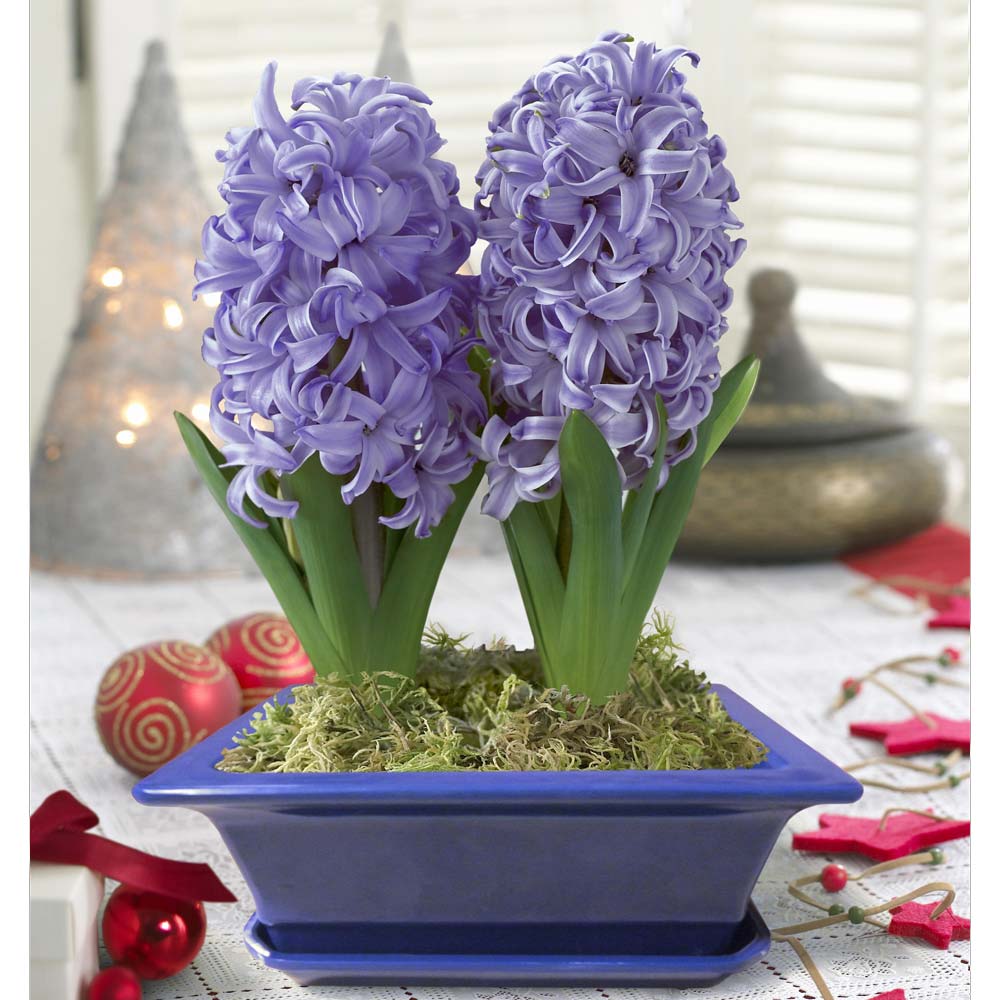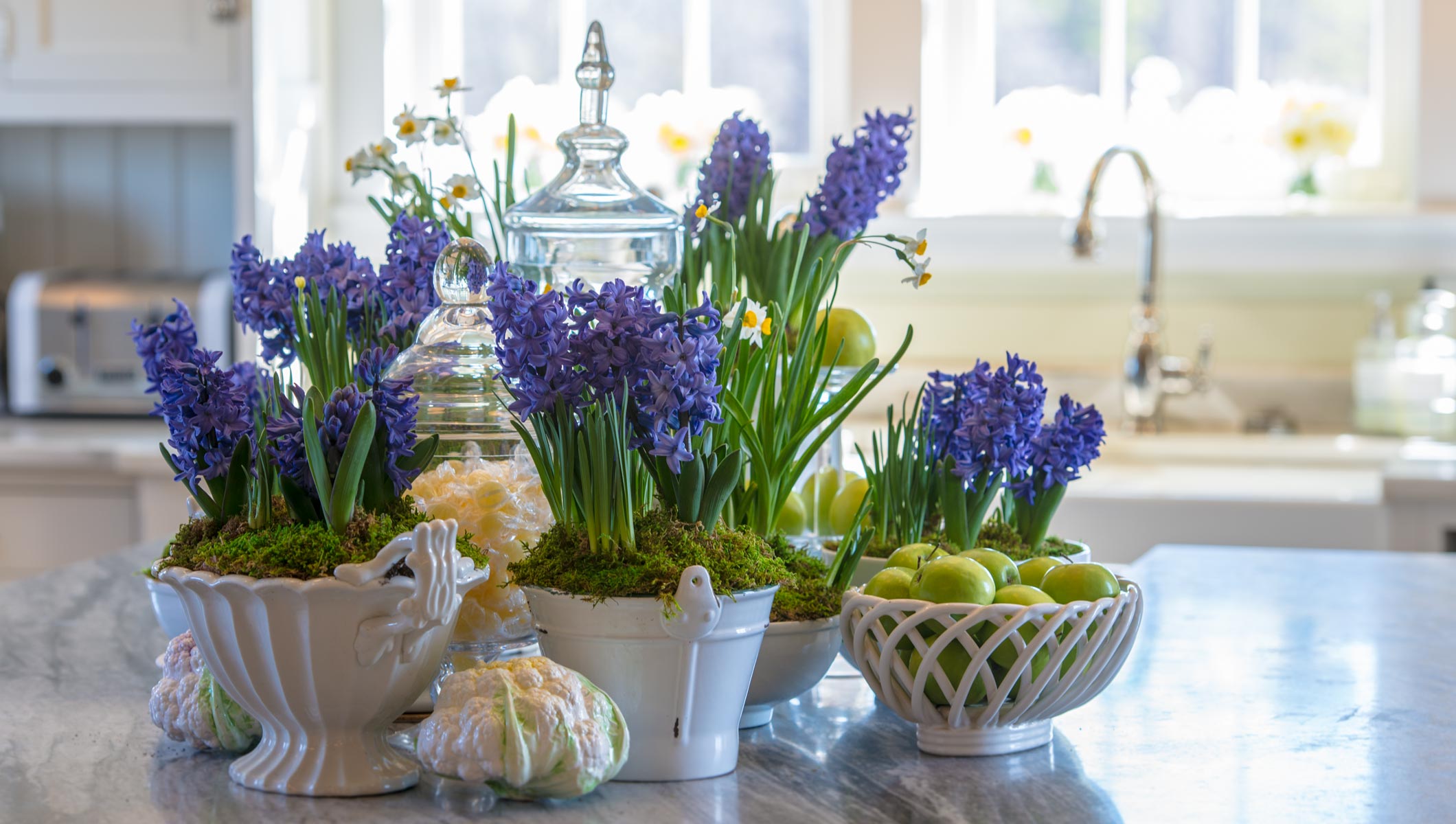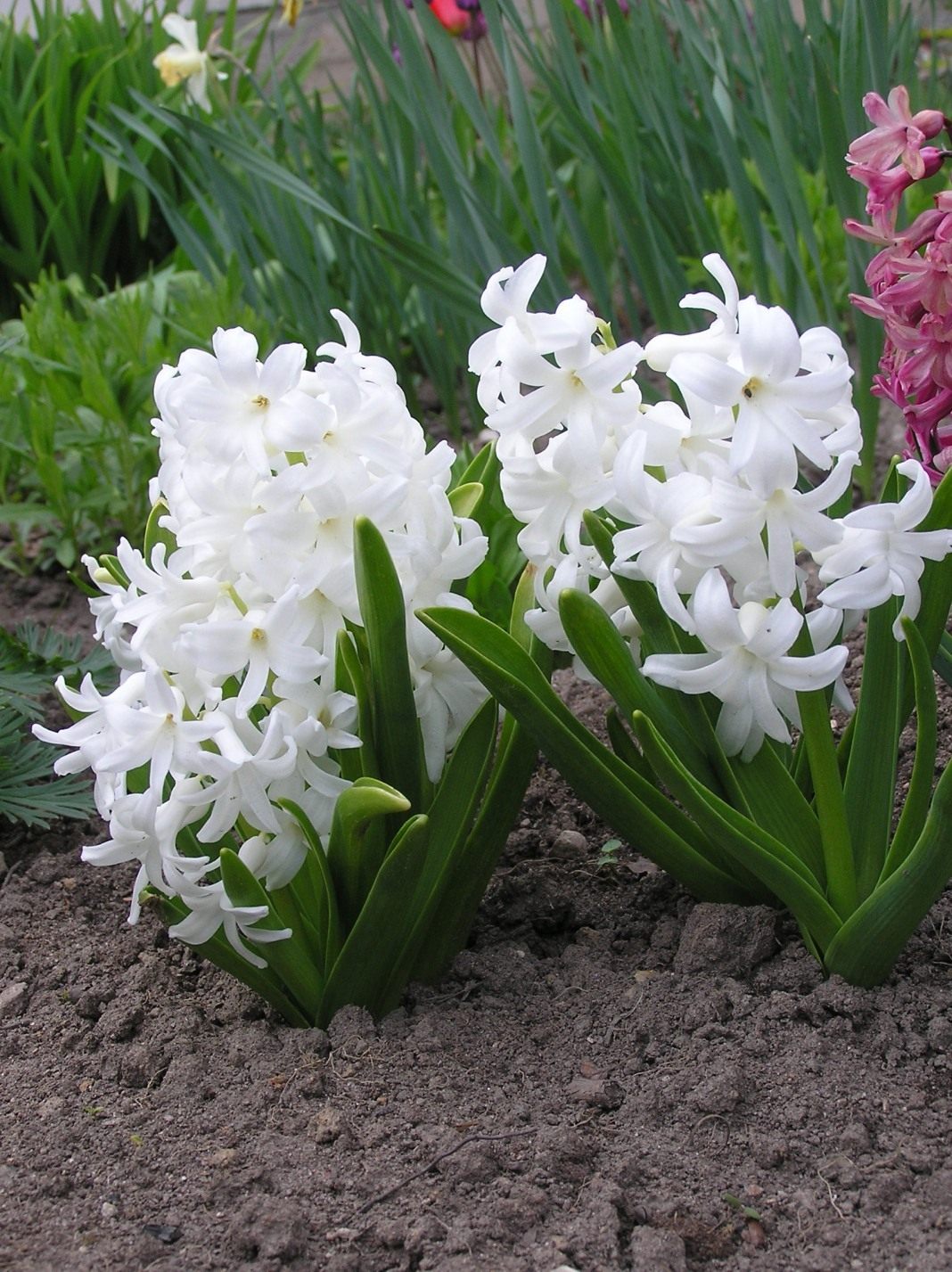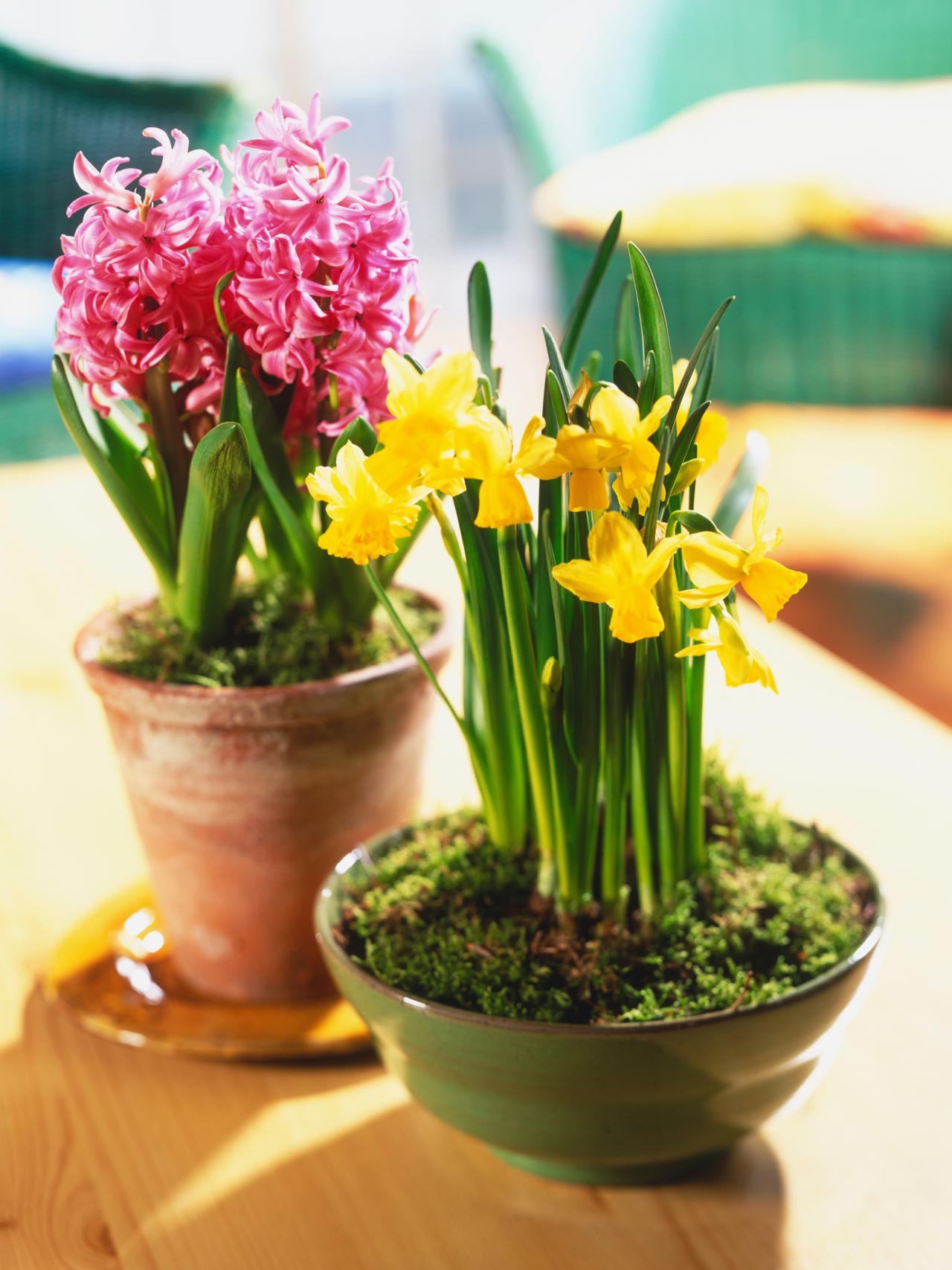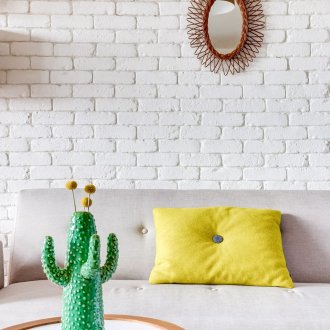Hyacinth: harbingers of spring on the windowsill (23 photos)
Content
Hyacinthus (Hyacinthus) - a representative of the bulbous perennials of the Asparagus family. The ancient Greeks called the plant "flower of the rains." He was one of the first to enjoy bright colors in early spring. It is not surprising that many nature lovers wish to decorate their home using a hyacinth flower. Plants are decorated with window sills of city apartments, and flower beds of summer residents.
Origin
The birthplace of hyacinths is the vast majority of the territories of the East and North Africa. However, Holland particularly popularized the flower. This country is often called the "Hyacinth Center." In the Netherlands, breeders work tirelessly, creating amazing new varieties, and the export of the best bulbs reaches enormous proportions.
The mild and humid climate of the country made it possible to grow these flowers without much effort. As early as the 17th century, enterprising Dutchmen began mass breeding of hyacinths and other bulbous perennials on an industrial scale.
Description
Indoor hyacinth has dense bulbs, complemented by juicy grassroots leaves turning into a flowering stem (length up to 35 centimeters). After flowering, almost the entire ground part dries up. Near the edge of the top sheet is a kidney. It is she who will give flowering next year.
Other leaves can also be supplemented with small onions. As a rule, they are very weak, but quite suitable for growing (meaning vegetative propagation).
Hyacinth flowers are very effective. Inflorescences are cateiform, resembling an oblong cone in shape. Perianth is represented by a bell-shaped funnel with slightly bent lobes.
Hyacinth flower is rich in shades and tones: from neutral white to saturated red. Both simple varieties and terry-type varieties are popular. The fruit of the "rain flower" contains two seeds surrounded by a soft fleshy peel.
Species diversity
Varieties of hyacinths are presented in such an impressive amount that it is rather difficult to systematize them all. It was previously believed that there are 30 species and 500 varieties of these amazing flowers.
Large-scale reorganization and changes in the principles of plant classification themselves have caused many species to be transferred to another genus. Now it is customary to call hyacinths only three types:
- Oriental;
- Litvinov's flower;
- Trans-Caspian.
These are the three main plants that are suitable for growing and breeding new varieties. It is virtually impossible to name the exact number of how many varieties exist at the moment.
Color classification
The easiest way to classify plants by color and popularity. There are six types:
- Blue hyacinth in a pot (Perle Brillante, Mary);
- Lilac hyacinths (Blue Magic, King of Indigo);
- Pink Hyacinth (Anna Marie, Gertrude);
- Red flowers (Hollyhock, Tubcrgen’s Scarlet) - terry varieties especially popular for growing;
- White hyacinth (Arentine Arendsen);
- Blooming hyacinth, painted in yellow or orange (Yellow Hammer).
Classifying varieties, given the relevance or popularity, is quite difficult. A home flower is selected based on its decorative qualities, cost, availability on sale, individual preferences, analyze the properties of other plants on the street (are all flower components compatible). Among the most popular "rain flowers" can be noted such varieties as Bimark, Delph Blue, Delight, Lord Balfour, Edison, Ian Boss.
Growing Features
Hyacinth at home is grown with special difficulty. The plant is moody, requiring some knowledge from gardeners and scrupulous implementation of the rules.The main features that everyone should know about:
- Flowers are transplanted exclusively in neutral soil. The ideal substrate is sheet earth and high-quality turf in equal proportions. Acidic soil is lime before planting a bulb. When planting flowers in heavy clay soil, it is better to add a little river sand to the substrate;
- Hyacinth in a pot and in open ground does not tolerate excessive moisture. It is very important to form a good drainage;
- Lighting must be of high quality, but not overly bright;
- Hyacinth is capricious and difficult to grow at home because of its sensitivity to drafts. Experienced gardeners prefer to plant a flower near shrubs or fences, which will protect fragile inflorescences from gusts of wind.
Growing hyacinths at home involves a complete rejection of fresh organics. Plants do not tolerate this specific fertilizer.
Planting plants
Experienced gardeners know what insidious hyacinths are, so planting and care are carried out strictly according to plan. Bulbs are recommended to be planted simultaneously with daffodils. The optimal time is the beginning of September. The depth of the planting fossa is 15 cm. The distance between the plants is about 10 cm.
Florists who know how to grow hyacinth at home, recommend picking medium bulbs for planting. They are more resistant to weather. All planting material is carefully studied.
All soft, damaged, rotten and other defective bulbs are removed and discarded. Before transplanting hyacinth onto the prepared soil, the plants are soaked for 30-40 minutes in a fungicide solution.
Valuable recommendation
It is noted that the flower lives well in open ground, if you form the right place for growing. Before planting hyacinth, make a “sand shirt”. A small amount of sand (preferably river) is thrown to the bottom of the hole. The optimal thickness of the ball is 4 cm.
The bulb is slightly pressed into the sandy layer and first covered with the rest of the sand, and then with a soil substrate. This allows you to improve the properties of the soil: water will not stagnate near the rhizome.
Garden care
When the chores associated with planting have ended, another question becomes relevant: how to care for hyacinth in the garden. There are few requirements for agricultural technology, but they must be fulfilled.
The main rules:
- The flower is difficult to tolerate the neighborhood with weeds, so you will have to clean the area regularly;
- A transplanted plant needs systematic loosening of the soil;
- It is advisable to mulch the soil immediately after planting;
- So that moisture does not leave hyacinth, watering in a dry season should be regular. The soil is saturated with 15-25 cm;
- Growing hyacinths at home involves the mandatory introduction of feed. The ideal moment is the period of active vegetation.
Grown flowers are transplanted in the summer. When the period of active flowering ends, the bulbs are dug up and stored until mid-September. In early October (the deadline) they select a place and plant the plants again.
Hyacinth propagation
True connoisseurs of the beauty of spring flowers know how to propagate hyacinth. For breeders, a more preferred seed method. If hyacinth is planted in this way, the seedlings are not capable of dubbing the features of the parent plants.
The growth of children in the bulbs of the plant is slow. This is perhaps the main inconvenience. Each year grows no more than 3-4. Children are separated shortly before the dormant period. Those involved in breeding are well able to capture this moment.
Since hyacinth reproduces reluctantly, and is also very sensitive to any damage, it is better to dry the mother’s bulb for several days before starting the separation procedure. Tiny bulbs, children grow up in a flower bed.
In this case, the properties of the substrate must fully meet the needs of the plant. Mini bulbs are not suitable for forcing.Flowering can be expected in 3-4 years, not earlier.
About current issues
A lot of effort needs to be spent to grow hyacinth, home care is also fraught with difficulties caused by diseases and pests. Among the main reasons that provoke ailments in bright spring flowers, there are:
- The use of pre-infected planting material (if there is a pathogen in the substrate, the plant will immediately react to it);
- Too acidic and heavy soil (before watering hyacinth, water is preliminarily prepared using soil acidity correctors);
- Use of fresh organics that no species or variety of hyacinths tolerates;
- Use of a site where predecessors previously inhabited are not friendly to the "flower of the rains";
- If you plant rotted or otherwise damaged hyacinth, cultivation and care will be especially difficult;
- Dense landing.
Hyacinth is truly a sophisticated and moody flower. You need to take care of the plants with special trepidation. If all conditions are met, spectacular flowering will delight amateur gardeners from year to year.


